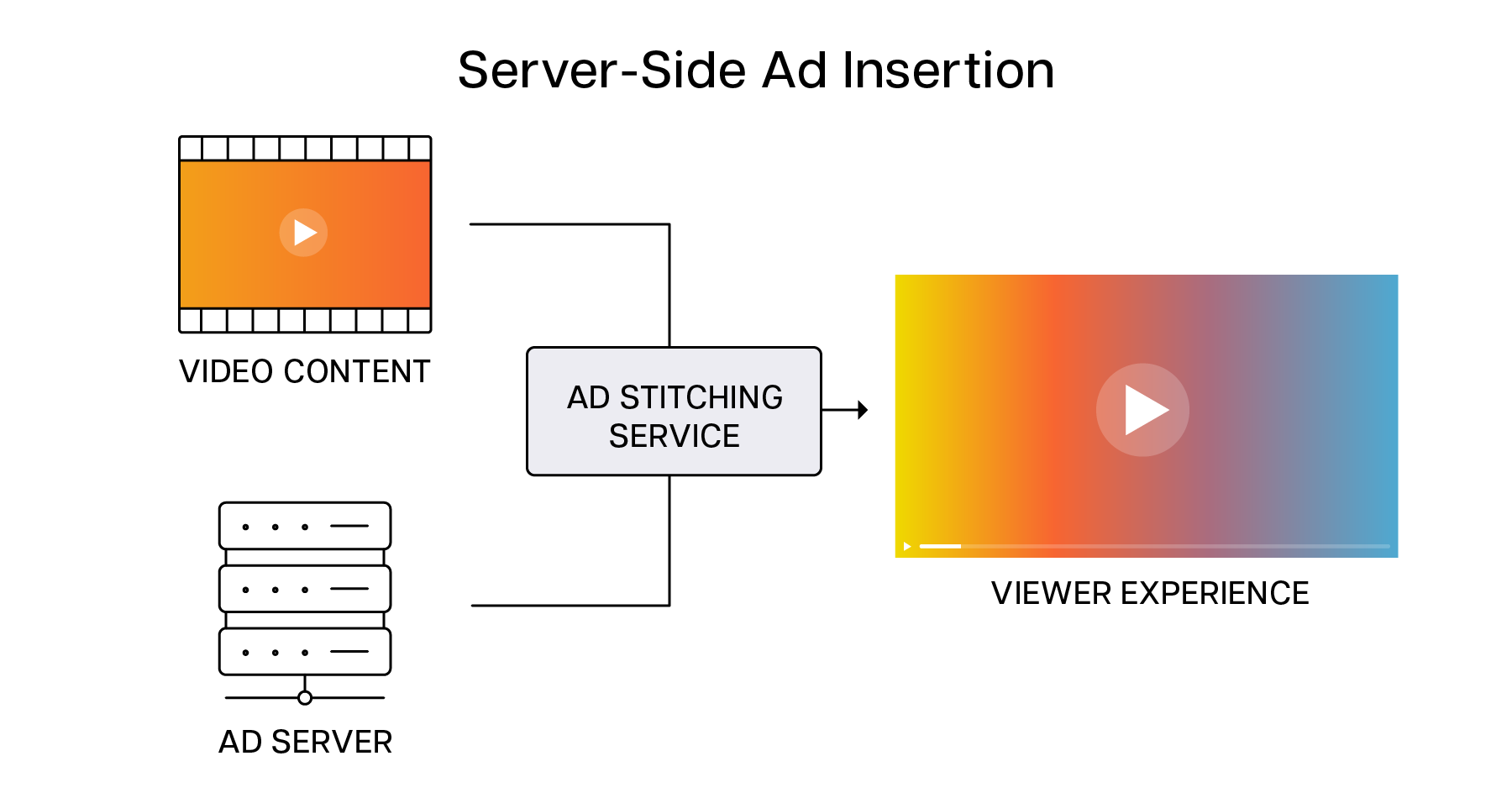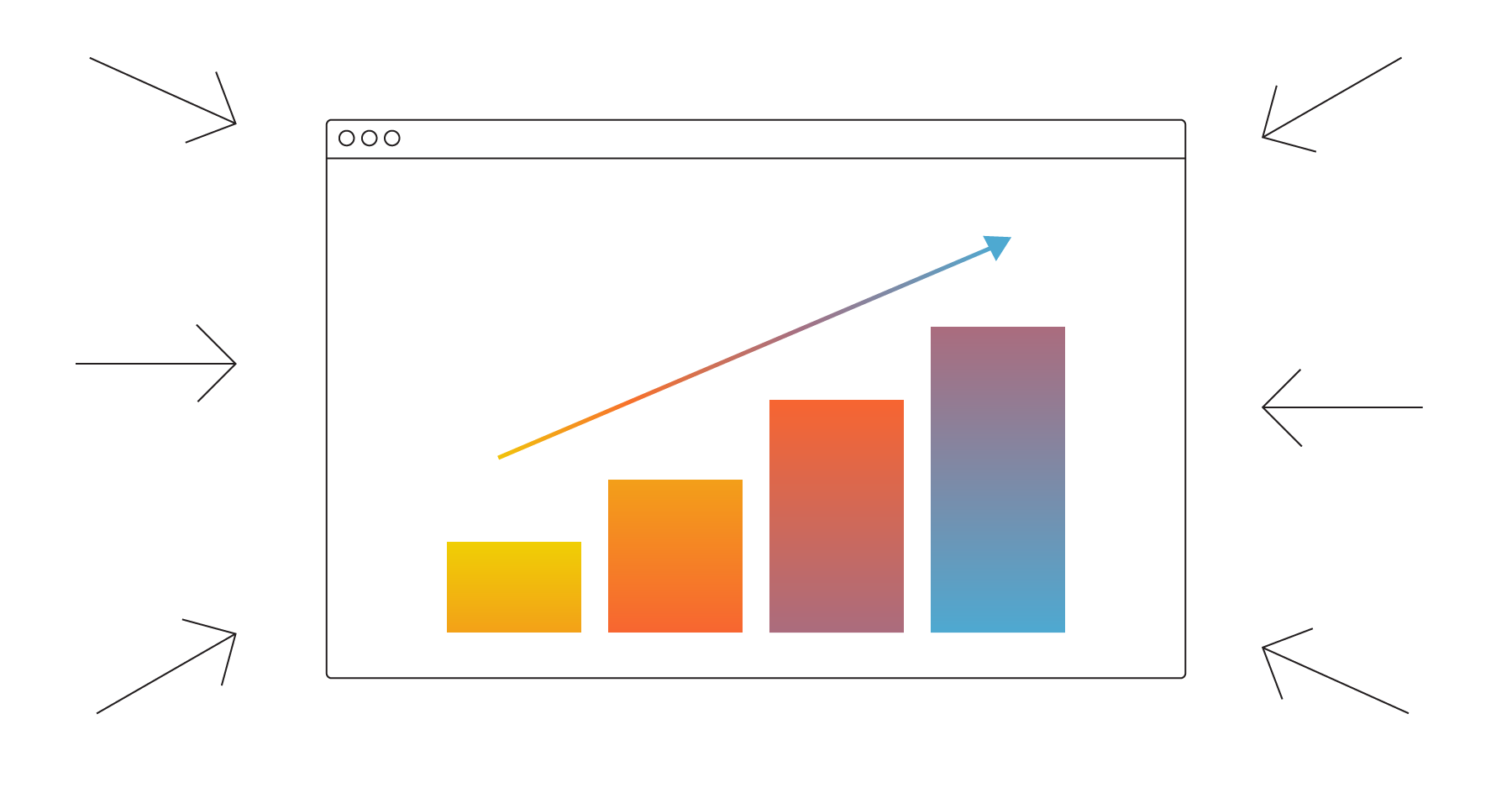CSAI vs SSAI: Using Client-Side or Server-Side Ad Insertion
Media

Media companies entering the world of ad-supported video on demand (AVOD) have lots of things to consider, from technology to data to operations. One of the most important operational considerations is the best approach for ad delivery: CSAI vs SSAI.
Choosing client-side or server-side ad insertion is a key business decision, as each method brings distinct advantages and challenges. Whether you’re an established video streaming service expanding your monetization strategy or a new brand breaking into the market, knowing the differences will inform your choice. Based on your needs, you may even consider a hybrid approach.
What is CSAI?
Client-side ad insertion (CSAI) offers a real-time approach to video ad delivery. Your content remains separate from the ads, allowing the client to request ads based on existing data as well as data collected during the viewing session.
How Does CSAI Work?
When the video player encounters ad markers in the video stream, it pauses the content and sends a request for an ad to the ad server. The ad server then selects an ad and delivers it to the client, which plays the ad during the paused content.

What is SSAI?
Server-side ad insertion (SSAI), also known as ad stitching or dynamic ad insertion, provides a more seamless viewing experience. Ads are stitched into the video stream, ensuring consistent delivery across devices.
How Does SSAI Work?
When a viewer reaches an ad break, prefetched ads from the ad server are brought in by the stitching service. The stitcher selects a rendition matching the bitrate, frame rate, and audio level of the video stream and passes the content back to the viewing device.

CSAI vs SSAI: Pros and Cons
Deciding between CSAI and SSAI requires knowing their key advantages and challenges. Certainly, each ad insertion method can be customized to fit any strategy. But in general, one method tends to better address the following key factors than the other.
CSAI Advantages
CSAI combines flexible ad delivery options with rich analytics. It can be a powerful tool with its ability to fully control the ad experience and provide detailed metrics on their performance.
- Real-time ad control. Ad creative and frequency can be customized based on data from the current viewing session. For example, if a user skips a particular ad, that user won’t be served that ad again during the same session.
- Ad creative compatibility. Client-side players can support different types of media files and interactive elements, allowing them to deliver a variety of ad formats and creatives.
- Ad performance reporting. Since the ad content is delivered and executed on the client side, metrics related to user interactions are typically more accurate.
CSAI Challenges
Potential viewer experience issues from latency and buffering, along with challenges from ad blockers, should be carefully weighed.
- Buffering and latency. Pausing content to load ads can lead to buffering or latency in some instances, which obviously reduces the overall quality of the viewer experience.
- Device compatibility. Effectiveness is contingent on the capabilities of the client, which could deliver inconsistent performance across different devices.
- Ad blocking. Because the video pauses, the player requests ads, and then the video content resumes, there’s greater susceptibility to ad blockers.
SSAI Advantages
SSAI provides a streamlined and seamless viewing experience that is reminiscent of traditional TV advertising. Its ability to limit ad blockers’ effectiveness and deliver consistent quality across devices makes it an attractive option for many streaming services.
- Buffering and latency. Because the ads are stitched directly in the video stream, the viewing experience is smoother and less likely to be disrupted.
- Device compatibility. Without a client fetching or delivering the ads, the ad experience tends to be more consistent across a wider range of platforms and devices.
- Ad blocking. Ad blockers are less effective at identifying and blocking stitched ads, which can lead to better fill rates.
SSAI Challenges
Potential limitations in ad campaign control and performance reporting should be carefully considered.
- Real-time ad control. Because ads are prefetched by the ad server, they can’t be adjusted in the moment based on current session data. So if a user doesn’t engage a particular ad, neither that ad creative nor its frequency can be adjusted until the next viewing session.
- Ad creative compatibility. Some interactive or dynamic ad creatives may not be fully supported, limiting the types of ads that can be effectively delivered.
- Limited Measurement. Several metrics require additional mechanisms to track accurately, such as viewability and user interactions (e.g., clicks).
CSAI Use Cases
With its keen ability to control the ad experience in real time, client-side ad insertion lends itself well to a variety of specific use cases.
- VOD streaming. On-demand viewers prefer to control their experiences, which is a perfect opportunity to deliver interactive ads. Not only do these ads give viewers control of their ad experience, they offer advertisers a wealth of data. Plus, because the ads can be adjusted in the moment, audiences are more likely to engage them.
- Short, pre-roll ads. Viewers are typically most engaged when they first start watching, so ads optimized by their current viewing behavior have a better chance of catching their attention. Furthermore, any buffering or latency issues will be less disruptive at the beginning of the video content than in the middle.
SSAI Use Cases
Server-side ad insertion offers many use cases for delivering a high-quality, consistent user experience.
- Live/linear streaming. If an ad disrupts a VOD experience, the viewer can always rewatch missed content. It’s inconvenient but not unforgivable. Disrupted live content, however, can cost sports fans the winning play or mystery lovers the plot twist. Stitching ads directly into the video stream is the best way to avoid these situations.
- Longer, mid-roll ads. These kinds of ad breaks are not only more prone to disruption from client issues, they may also run into device compatibility issues. If your audience views content on a wide variety of devices—especially older ones—use the method with the most consistent delivery across devices.
Hybrid Ad Insertion
Unfortunately, there is no single method that captures all the benefits of both technologies. But there are a few ways to combine them that take advantage of the primary benefits with some trade-offs.
- CSAI with SSAI auto-failover. If you want to get around ad blockers without losing real-time control, Brightcove offers a server-side auto-failover option. Ads are primarily delivered from the client, but when the player detects an ad blocker, it automatically requests ads from the server instead. The trade-off is those ads won’t have the same level of data, but you’ll maintain your fill rate.
- Client-side ad beaconing with SSAI. If you want real-time control with a high quality VOD experience, Brightcove allows you to add client-side ad tracking (or beaconing) to your server-side inventory. The trade-offs are your ads are now susceptible to ad blockers, thanks to the client data, and this option is not available for live streams.
- Client-side pre-roll with live SSAI. If you want real-time control with a high quality live experience, you can insert pre-roll ads from the client into Brightcove’s live server-side streams. The trade-offs are these ads are also susceptible to ad blockers, and this option is not available for mid- and post-roll ads.
Choosing the Best Ad Insertion Strategy
Both CSAI and SSAI have distinct advantages, challenges, and use cases that will appeal to different goals and viewer preferences. So the best ad insertion strategy ultimately depends on what you value most for your service and audience.
Do you prioritize real-time control and interactivity? Or is a seamless, consistent viewing experience your goal? You’ll also want to consider your technical capabilities, target audience, and content type as you decide.
By evaluating each method’s strengths and aligning them with your goals, you’ll be able to select the approach that maximizes both viewer engagement and ad revenue. If you’re still not sure, consider Brightcove’s Ad Monetization service. Not only do we offer full-service onboarding and implementation, our industry experts will consult with you directly to optimize your ad strategy.



